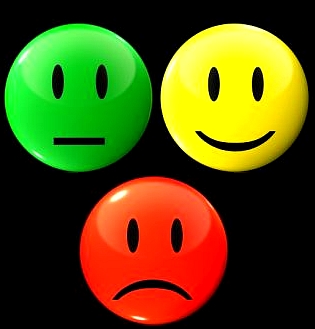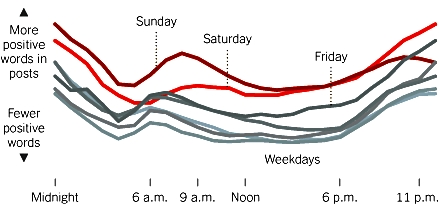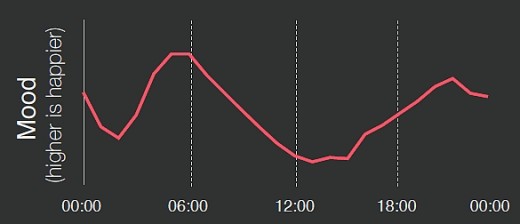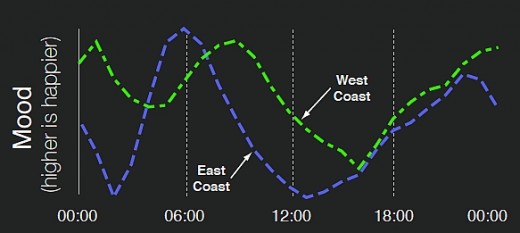Twitter Study Reveals Daily Mood Patterns that Advertisers will Target
Two very large studies of mood changes throughout the day as assessed by counting positive or negative tones in Twitter messages will be very useful for advertisers who have been unsure about the best times to promote their products especially for the younger generations (gen XYZ).
Interestingly the mood patterns seemed to apply universally throughout the world.
People are grumpy when they wake up, brighten up during the morning, then decline during the afternoon. Moods get better very late in the evening to peak in the two hours before and two hours after midnight. As expected mood tended to be much brighter on the weekend which showed a secondary peak around 0800-1100 hours, which did not occur during the week. The best day during the week was Friday with a secondary peak around 1700-1800, when most people finished their working or schooling week.


A team of sociologists at Cornell University gathered up to 400 messages from 2.4 million Twitter users posted in the three years from 2008 to 2010.
Their research was published in the journal 'Science'.
They applied text analysis to the English messages using various criteria for positive moods and negative moods.
Words similar to "agree" and "awesome" were regarded as signals for positive moods.
Words similar to "afraid" and "annoy" were regarded as signs of negative moods. They also used emoticons and various text face symbols like ":)" that suggest moods.
The results of this study confirmed previous findings from other data sources about how mood fluctuates throughout the day.
The researchers cautioned that their data analysis was simplistic and that the Tweets may relate more to what the listener want to hear rather than what the tweeter's mood.
They undertook various analyses to verify the validity of their conclusions.

The findings from the study were:
- About 7 % of the users were clearly "night owls," with peak positive messages around midnight.
- About 16 percent were "early birds", who displayed similar peaks very early in the day.
- For the average
- Twitter poster in each country, positive mood posts peaked around breakfast time, from 6 AM to 9 AM ; they thendeclined gradually until hitting a low-point between 3 PM and 4 PM. Moods than got better, increasingrapidly after dinner, peaking around midnight.
- Overall mood was lowest at the beginning of the week especially on Monday afternoons and through Tuesday.
- Moods improved towards the end of the week, peaking on Friday in late afternoon ('knock off time").
- Saturday and especially Sunday were peak positive mood times.
- The daily mood pattern on weekend days occurred about two hours later - the morning peak shifted to about 9 AM and the evening peak occurred after past 9 PM. The probable explanation for this is that people sleep in on weekend and stay up later - but the overall daily pattern and shape of the curve were the same.
- The similarity of the mood patterns on the weekends and weekdays suggests that the pattern is not related to work, but is related to more fundamental daily cycles such a the biological clock or circadian factors.
In an earlier study researchers at Northwestern University looked at 300 million tweets in USA from 2006-2009 using similar word analysis techniques and compiled Twitter mood maps of the US for each hour of the day.







This study showed that people had a happier mood early in the late evening (around 10 p.m.) and morning (around 6 a.m.). People had more positive moods on the weekends rather than during the week, with Fridays showing a secondary peak in the late afternoon.
This study showed that the shifts in the peaks and toughs of the mood patterns aligned with the time of day changes in different parts of the US (see image).
A Gold Mine for AdvertisersThe results of this study for advertisers targeting Twitter users is simple and profound. People are more likely to buy when they are happy. The results show the periods when people are happiest throughout the day and throughout the week. The maps can be used for universal advertising campaigns to take account of time of day variations and associated mood swings to develop advertising campaigns.